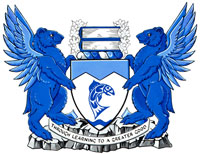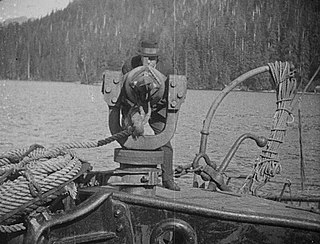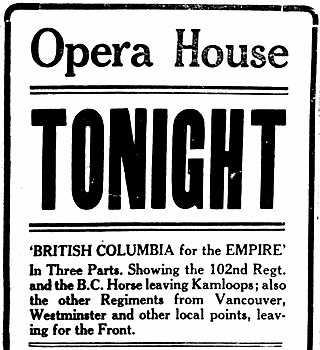
British Columbia is the westernmost province of Canada. Situated between the Pacific Ocean and the Rocky Mountains, the province has a diverse geography, with rugged landscapes that include rocky coastlines, sandy beaches, forests, lakes, mountains, inland deserts and grassy plains. British Columbia borders the province of Alberta to the east; the territories of Yukon and Northwest Territories to the north; the U.S. states of Washington, Idaho and Montana to the south, and Alaska to the northwest. With an estimated population of over 5.6 million as of 2024, it is Canada's third-most populous province. The capital of British Columbia is Victoria, while the province's largest city is Vancouver. Vancouver and its suburbs together make up the third-largest metropolitan area in Canada, with the 2021 census recording 2.6 million people in Metro Vancouver.

David Barrett was a politician and social worker in British Columbia, Canada. He was the 26th premier of British Columbia from 1972 to 1975.
Highway 19A, known locally as the Oceanside Route or the Old Island Highway, is a provincial highway in British Columbia, Canada. It runs along two former sections of Highway 19 on Vancouver Island, within Nanaimo and between Craig's Crossing and Campbell River. The section of Highway 19A between Craig's Crossing and Campbell River is 136.89 km (85.06 mi) long, and the Nanaimo alignment covers 10.64 km (6.61 mi). The highway was established after Highway 19 was realigned to a new road between 1996 and 2001.
Hollywood North is a colloquialism used to describe film production industries and/or film locations north of its namesake, Hollywood, California. The term has been applied principally to the film industry in Canada, specifically to the cities Toronto and Vancouver.

William John Bowser was a politician in British Columbia, Canada. He served as the 17th premier of British Columbia from 1915 to 1916.
The 1924 British Columbia general election was the sixteenth general election in the Canadian province of British Columbia. It was held to elect members of the Legislative Assembly of British Columbia. The election was called on May 10, 1924, and held on June 20, 1924. The new legislature met for the first time on November 3, 1924.

Vancouver-Fraserview is a provincial electoral district for the Legislative Assembly of British Columbia, Canada.

Capilano University (CapU) is a teaching-focused public university based in North Vancouver, British Columbia, Canada, located on the slopes of the North Shore Mountains, with programming that also serves the Sea-to-Sky Corridor and the Sunshine Coast. The university is named after Chief Joe Capilano Sa7plek (Sahp-luk) who was the leader of the Squamish people (Sḵwx̱wú7mesh) from 1895 to 1910.
The BC Liquor Distribution Branch (BCLDB) is the governmental body responsible for distributing alcohol and cannabis products in the province of British Columbia, Canada. The BCLDB operates under the Ministry of Finance and was established in 1921. The BCLDB head office is located in Burnaby, with distribution centres in Delta and Kamloops.

Denman Island,, is one of the Northern Gulf Islands and part of the Comox Valley Regional District of British Columbia, Canada. It is a member of the Islands Trust group of islands and is home to a small community of 1391 year-round residents.
The Provincial Party of British Columbia (PROV) was a political party in British Columbia, Canada.
The Creative BC Film Commission, formerly the BC Film Commission and also referred to as the Provincial Film Commission at Creative BC, is an agency established by the provincial government that promotes film and television in British Columbia including Metro Vancouver. Creative BC integrates the growth and development efforts of the province's creative industries including Motion Picture, Music and Sound Recording, Interactive and Digital Media, and Book and Magazine Publishing.
Bill 28, the Miscellaneous Statutes Amendment Act, 2016, is a British Columbian law that came into force on August 2, 2016. The law was introduced after calls urging the British Columbia (BC) provincial government to intervene in the housing market and curb foreign investment that was seen as a major contributor to the rapid rise in home prices.

BC Liquor Stores are a chain of government-owned and operated retail outlets operated by the British Columbia Liquor Distribution Branch to distribute alcoholic beverages in the province of British Columbia, Canada. They are accountable to the Attorney General of British Columbia. BC Liquor Stores currently operate 198 locations across the province. The chain was established in June 1921, following the result of a plebiscite in favour of liquor availability through government liquor stores. Prior to the plebiscite, alcohol had been illegal through the Prohibition Act, introduced on May 23, 1916, with exceptions for sacramental, medicinal or industrial purposes.
May Gowen Watkis served as a projectionist, clerk, and tax inspector at various agencies of the British Columbia government during the years 1913-40. In 1920-21, she was briefly employed as a clerk in the Vancouver office of the British Columbia Patriotic and Educational Picture Service (PEPS), under the service's director, Dr. Albert Richard Baker. In May 1921, she was the subject of an article written by Edith Cuppage for Maclean's Magazine. Cuppage described Watkis as the head or "directress" of the Picture Service. This erroneous information about May Watkis has been repeated in a number of books and articles on Canadian film history, which describe her as the director of the Patriotic and Educational Picture Service and the producer of its films.

Arthur David Kean (1882–1961), often known as "Cowboy" Kean, was a Canadian filmmaker, journalist, broadcaster, photographer, and horseman. He was the first British Columbia resident to earn his living as a filmmaker, and the first to produce a feature film, the ill-fated Policing the Plains (1927).

Whaling: British Columbia's Least Known and Most Romantic Industry is a silent black-and-white documentary film produced by Vancouver filmmaker A. D. Kean in the years 1916–1919. It is an early example of Canadian documentary filmmaking, and is the most complete of Kean's surviving productions. It is probably the earliest extant film to depict steam whaling on the west coast of North America.
Leon C. Shelly (1906–1987) was a Canadian producer of industrial and sponsored films, active in Vancouver (1936–1945) and in Toronto (1945–1969).

British Columbia for the Empire was a Canadian feature-length silent documentary film released in 1916 by Vancouver filmmaker Arthur D. Kean, through his company Kean's Canada Films. It was a compilation film, assembled from his short films that depicted various British Columbia battalions in training and departing for service in the First World War.

![This logo appeared at the end of films distributed by PEPS. (Digital frame grab from Whaling [filmed 1916-19, released 1920]). BC Govt Credit frame grab from Whaling.tif](http://upload.wikimedia.org/wikipedia/commons/thumb/d/d1/BC_Govt_Credit_frame_grab_from_Whaling.tif/lossy-page1-222px-BC_Govt_Credit_frame_grab_from_Whaling.tif.jpg)









